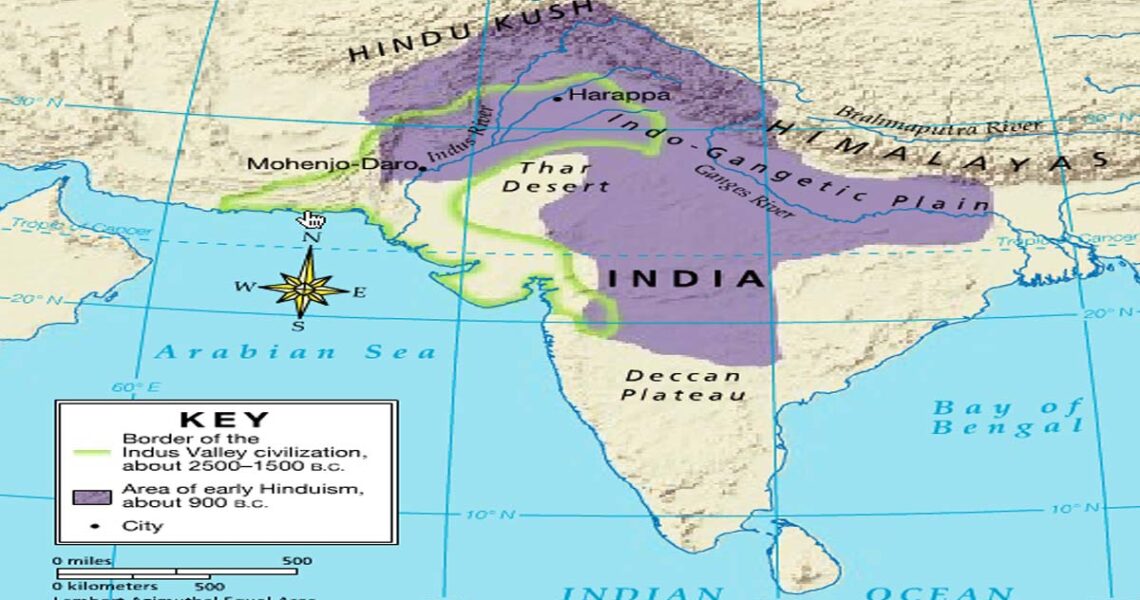Vedic Geography
It is very astonishing that despite the absence of satellites and advanced cartographic applications, the Vedic people had surprising knowledge about the countries, the ocean, rivers, mountains, etc.
After extensive research, Santanam was astonished by the Vedic Hindus knowledge of geography. It’s a matter of surprise that despite being books of hymns, the Vedas mention names of several geographical entities. The Vedas mention vast areas from Iran to the Vindhyas.
The Nadi-Sukta hymn of the Rig Veda highlights 21 rivers, which include Ganga in the East and Kubha (Kabul) in the West. The rivers like Yamuna, Saraswati, Sutlej, Ravi, Jhelum, and Indus are situated between Ganga and Kabul.
The river pattern has been presented in a definite order from the East to the West (i.e., from Ganga in the east to Kabul in the west). Between Ganga and Kabul are the rivers like Yamuna, Saraswati, Sutlej, Ravi, Jhelum and Indus.
Mountains like the Himalayas and the Mujavant are located in the North. ‘Samudra’ or ocean is cited in connection with rivers Sindhu and the river Saraswati falling into the ocean. There is mention of the ocean in connection with trade.
The geographic expanse of the Raag Vedic period covers present day western Uttar Pradesh, Haryana, Punjab, Rajasthan, Gujarat, the whole of Pakistan and the south of Afghanistan. The whole country was named as Bharatvarsha.
Besides, several acheological proofs suggest that the Vedic Hindus were acquainted with areas covering Iran, Turkey, Syria, Iraq in the Middle East and Egypt in Africa. Names of hundreds of kings are available in the Vedas who performed Aswamedha Yagna. The Great War of the Ten Kings – Dasaraja Yuddha in the Rig Veda clearly show that there were ten kingdoms by the time. Furthermore later, in epics like the Ramayana and the Mahabharata, we see Swayamvars attended by lot of kings from different countries.
Krishna’s tour from Mathura in Uttar Pradesh to Dwarka in Gujarat show the advanced transport system of the time. Before Krishna, Bharat travelled all the way from Iran-Afghanistan (Kekaya) border to Ayodhya in Uttar Pradesh very soon. The route is fairly explained in the Ramayana. Sughriv’s journey from Kishkindhya to Sri Lanka still testifies to the existence of the same places at present.
Even more, the entire world geography can be found extensively described in the ancient scriptures along with the details of their mountains, rivers and the races inhabiting themes. It is true that the names and divisions of these landmasses are different now but they testify to the wisdom of the vedic people regarding the world.
Lastly, the fact that the Indians called this planet “Bhu-Gol” or the Round Earth, as contrasted to the flat-earth theory by almost every other Earth civilisation, prove how advanced they were. Besides, the description of different planets of our solar system as well as the Lokas of advanced aliens and the detailed analysis of the galaxy Akashganga and the universe itself prove the enormity of knowledge of the vedic people.
